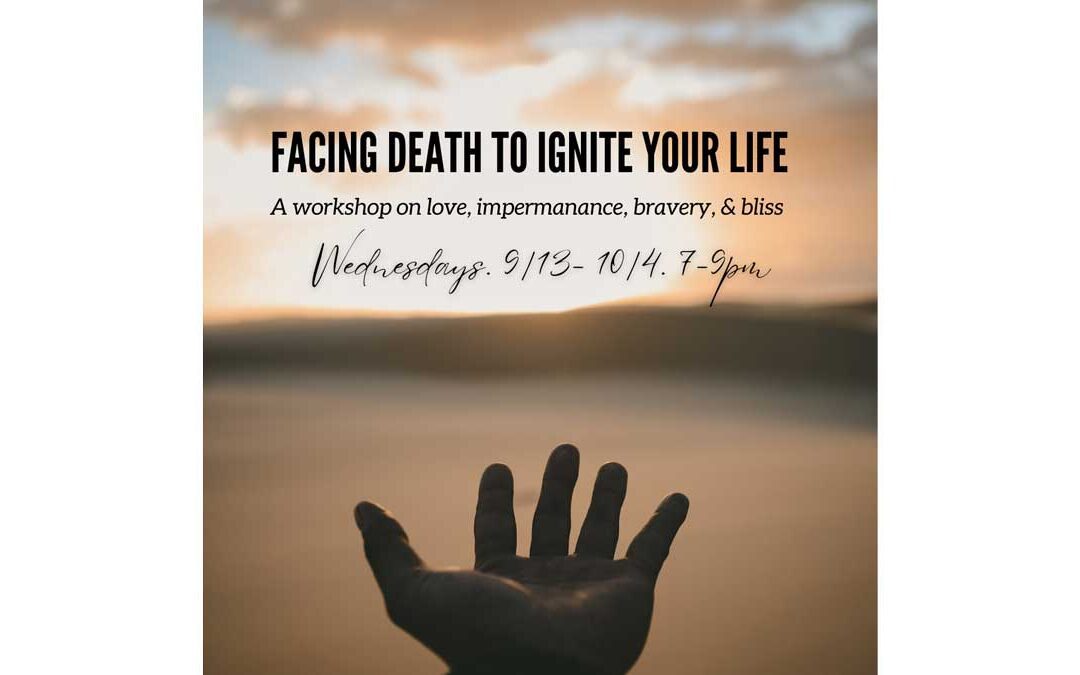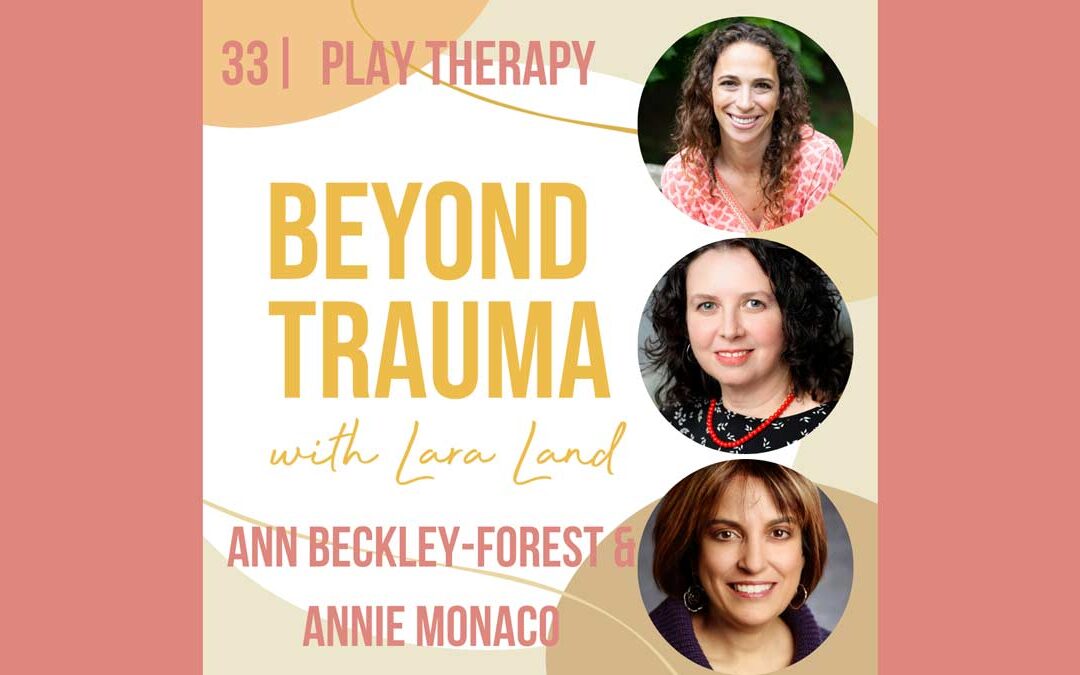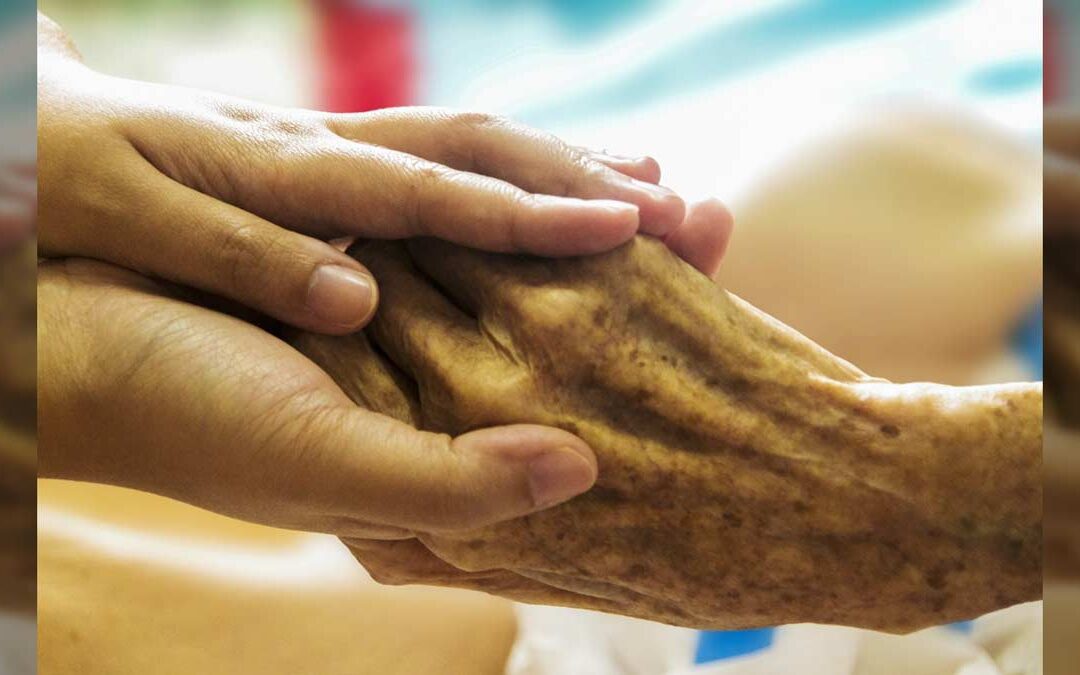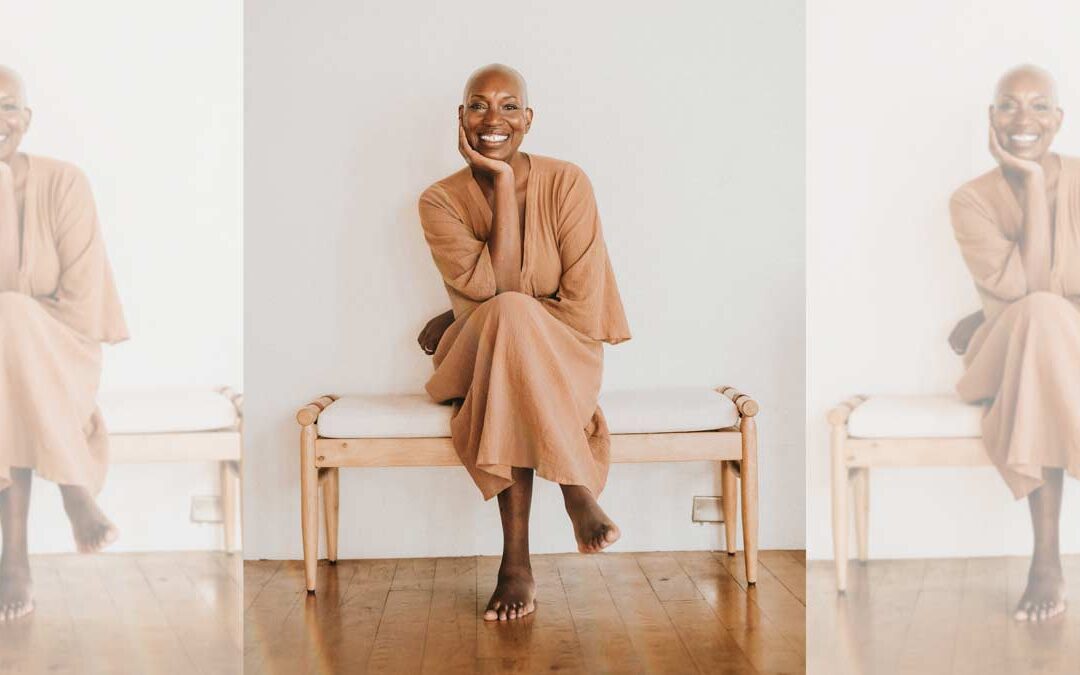
by Lara Land | Aug 2, 2023 | COACHING, COMMUNITY, LAND BLOG, LARA LAND, Self Improvement, SELF-IMPROVEMENT
Meditation has long been celebrated for its profound impact on our mental and emotional well-being.
However, a less explored yet equally transformative aspect of meditation is its contemplation on death. Far from morbid, this practice serves as a powerful reminder of the impermanence of life, propelling us to embrace the present fully. In this blog, we delve into the benefits of meditating on death and how it can help us live a more vibrant and purposeful life.
Understanding Impermanence and Embracing the Present
Meditating on death forces us to confront the transient nature of life. By acknowledging that life is impermanent, we become more aware of the preciousness of every moment. This awareness motivates us to live in the present, cherishing our relationships, pursuing our passions, and savoring the simple joys that surround us.
Fostering Gratitude and Contentment
Contemplating the finite nature of life encourages gratitude for what we have. Rather than dwelling on what we lack, we learn to appreciate the abundance in our lives. Gratitude enhances our sense of contentment, promoting a more positive and fulfilled outlook on life.
Letting Go of Trivial Worries
Meditation on death helps us gain perspective on our worries and fears. Trivial concerns lose their significance when viewed through the lens of mortality. By releasing unnecessary worries, we free ourselves to focus on what truly matters, making room for personal growth and self-improvement.
Motivating Personal Growth
Realizing the fleeting nature of life motivates us to seize opportunities for personal growth and self-improvement. We become more willing to step out of our comfort zones, take on challenges, and pursue our dreams. Meditation on death becomes a catalyst for positive transformation.
Strengthening Meaningful Relationships
By meditating on death, we recognize the importance of nurturing meaningful relationships with others. We learn to prioritize emotional connections, spending quality time with loved ones, and expressing our love and appreciation openly.
Reevaluating Priorities and Values
Contemplating mortality encourages us to reevaluate our priorities and align our actions with our core values. We let go of materialistic pursuits and focus on what brings true fulfillment and purpose to our lives.
Cultivating Mindfulness and Inner Peace
Meditation on death is a form of mindfulness practice that grounds us in the present moment. This mindfulness helps reduce anxiety about the future and regrets from the past, promoting inner peace and tranquility.
Embracing the concept of meditation on death might initially seem intimidating, but it holds the potential to transform our lives in profound ways. By acknowledging the impermanence of life, we learn to cherish the present, foster gratitude and contentment, and let go of trivial worries. This practice motivates personal growth, strengthens our relationships, and reevaluates our priorities.
If you are curious about how mediation on impermanence can enhance your life, join me for a 4-week virtual workshop on this topic. Details and registration HERE.

by Lara Land | Jul 30, 2023 | COACHING, COMMUNITY, LAND BLOG, LARA LAND, Self Improvement, SELF-IMPROVEMENT
Sally Kempton, a renowned spiritual teacher and author, dedicated her life to guiding individuals on a transformative journey toward inner awakening and self-realization.
Her book, Awakening Shakti changed my relationship to Goddess energy. With her profound wisdom and compassionate approach, Kempton’s work touched the lives of many, offering a pathway to deeper understanding, self-discovery, and spiritual growth. In this blog post, we will delve into the remarkable work of Sally Kempton, exploring her teachings, methodologies, and the profound impact she has made in the realm of spiritual awakening.
Sally Kempton’s journey began with her early exploration of Eastern philosophy and meditation practices, which led her to study under the guidance of revered spiritual masters. Drawing from her own experiences, she combined ancient wisdom with contemporary insights to create a transformative path that resonates with modern seekers.
Teachings and Methodologies
The Power of Meditation: Kempton emphasized the profound impact of tantric meditation as a vehicle for self-discovery and spiritual growth. Through various meditation practices, including mantra repetition, breath awareness, and mindfulness, Kempton taught individuals to quiet the mind, cultivate inner stillness, and access deeper states of consciousness.
Awakening the Energy Body: Kempton’s work focused on the exploration of the subtle energy body and its significance in spiritual awakening. She guided practitioners in awakening and harnessing the power of the chakras, facilitating a greater understanding of the connection between mind, body, and spirit.
Cultivating Embodied Awareness: Kempton emphasized the importance of grounding spiritual experiences in everyday life. She taught individuals to bring meditative awareness into daily activities, fostering a deeper sense of presence, mindfulness, and connection with the world around them.
The Practice of Self-Inquiry: Kempton encouraged individuals to explore their own consciousness through self-inquiry. By investigating deeply held beliefs, patterns, and identifications, one can uncover the essence of their true nature, leading to self-realization and a profound sense of freedom.
The Impact of Sally Kempton’s Work
Sally Kempton’s teachings have had a transformative impact on countless individuals seeking spiritual growth and self-realization. Through her workshops, retreats, and writings, she has touched the lives of many, offering guidance and support on the path to inner awakening. Her work has enabled individuals to:
Deepen Self-Awareness: Kempton’s teachings facilitated a profound understanding of oneself, allowing individuals to uncover hidden patterns, beliefs, and attachments that may hinder personal growth.
Cultivate Compassion and Presence: By embracing Kempton’s methodologies, individuals learned to cultivate compassion towards themselves and others, fostering a greater sense of interconnectedness and empathy.
Experience Expanded Consciousness: Through the practice of meditation and energy work, Kempton’s teachings empowered individuals to access deeper states of consciousness, experiencing moments of transcendence and connection with the divine.
Embrace Personal Transformation: Kempton’s work encouraged individuals to embrace personal transformation, to evolve beyond self-imposed limitations, and to embrace their full potential as beings of light and love.
Sally Kempton’s work touched the lives of countless seekers, guiding them on a transformative journey towards inner awakening and self-realization. Through her teachings, individuals have discovered the power of meditation, cultivated embodied awareness, and embraced personal transformation. Kempton’s profound insights continue to inspire and illuminate the path of spiritual growth, offering a beacon of light for those seeking a deeper understanding of themselves and the world around them.
If you are drawn to the path of inner awakening, consider joining me on my Costa Rica Clarity Retreat where I will offering many of her practices.
Remember, the journey towards self-realization is unique for each individual, and it requires patience, dedication, and self-compassion. Embrace the wisdom of Sally Kempton and embark on this transformative path with an open heart and a receptive mind.
May the illuminating work of Sally Kempton inspire you to discover the profound depths of your own being and awaken to a life filled with love, joy, and spiritual fulfillment.

by Lara Land | Jul 23, 2023 | COACHING, COMMUNITY, LAND BLOG, LARA LAND, Self Improvement, SELF-IMPROVEMENT
In a world filled with pressures and challenges, children often struggle to express their emotions, process their traumas, and navigate their way through difficult experiences. As a caring adult, you may wonder how you can support them in their journey toward healing and growth. This is where directive play therapy comes in. In this blog, we will explore the concept of directive play therapy and its powerful benefits for children. Whether you are a parent, educator, or mental health professional, understanding this approach can help you optimize your support for children in need.
What is Directive Play Therapy?
Directive play therapy is a therapeutic approach specifically designed for children, utilizing play as a means of communication and healing. Unlike traditional talk therapy, where children may find it challenging to express themselves verbally, directive play therapy allows them to engage in a safe and supportive environment where they can freely explore their feelings, thoughts, and even complex trauma or childhood trauma through play.
How Does Directive Play Therapy Work?
During a directive play therapy session, a trained therapist actively participates in guiding the child’s play. This therapist takes on a directive role by providing structure, suggesting specific activities, and setting limits when necessary. Through this approach, the therapist helps the child understand and process their emotions, develop problem-solving skills, enhance self-esteem, and build resilience.
The Benefits of Directive Play Therapy:
- Emotional Expression and Regulation: Directive play therapy provides a safe space for children to freely express their emotions, even those that may be difficult or overwhelming. By engaging in play, they can release emotional tension, explore their experiences, and develop healthy ways to regulate their emotions and even process childhood trauma or complex trauma.
- Problem-solving Skills: Through directive play therapy, children are encouraged to take on different roles and scenarios, allowing them to practice problem-solving and decision-making skills in a supportive environment. This helps them develop creative thinking, enhance cognitive abilities, and learn to navigate challenges effectively.
- Building Resilience: Directive play therapy helps children develop resilience by encouraging them to face and cope with challenging situations in a controlled and guided manner. Through play, they can learn how to adapt, persevere, and bounce back from adversity, building the foundation for future resilience.
- Enhancing Self-esteem: Children often struggle with self-esteem issues, especially if they have experienced trauma or challenging life circumstances. Directive play therapy provides opportunities for children to experience success, receive positive feedback, and build confidence in their abilities, leading to improved self-esteem.
Directive play therapy is a powerful approach that can help children heal, grow, and thrive. By understanding the principles and benefits of this therapy, you can provide effective support to children who may be struggling with emotional challenges. Whether you’re a parent, educator, or mental health professional, incorporating directive play therapy techniques can make a significant difference in the lives of the children you care for. Start exploring this remarkable therapeutic approach today and witness the transformative impact it can have on children’s well-being.
Take a listen to the latest episode of the Beyond Trauma Podcast where we delve into directive play therapy as taught by Ann Beckley-Forest and Annie Monaco, and how it works.

by Lara Land | Jul 16, 2023 | COACHING, COMMUNITY, LAND BLOG, LARA LAND, Self Improvement, SELF-IMPROVEMENT
I’ve been touched by the many responses to my recent newsletter where I shared that I’ve recently been certified as an End-of-Life Doula.
I’d like to share more about this care and its transformative impact on individuals facing end-of-life anxiety or trauma. In this blog post, we will delve into the compassionate realm of end-of-life care, shedding light on the unique role these doulas play in providing solace, support, and healing during life’s most challenging transition.
Understanding the End-of-Life Doula
At its core, an end-of-life doula is a caring and empathetic companion who walks alongside individuals and their loved ones during the final stages of life. Unlike medical professionals, whose focus lies primarily on physical care, end-of-life doulas offer holistic support, addressing emotional, spiritual, and practical needs.
Trauma and End-of-Life Care
End-of-life experiences often carry an inherent weight of trauma. The journey towards death can encompass emotional pain, existential anxiety, unresolved conflicts, and a profound sense of loss. Individuals facing their mortality may grapple with fear, regret, or a sense of unfulfilled purpose. Here, the end-of-life doula steps in as a compassionate guide, helping to navigate the complex landscape of trauma and facilitating the healing process.
Creating a Safe Space for Expression
One of the fundamental roles of an end-of-life doula is to create a safe and non-judgmental space for individuals to share their fears, regrets, and unresolved emotions. By actively listening and offering a supportive presence, doulas allow individuals to express their deepest thoughts, validating their experiences and providing solace. This therapeutic space encourages the exploration and resolution of trauma, fostering healing and emotional growth.
Addressing Unspoken Wounds
Trauma often arises from unresolved issues, unspoken words, or unfinished business. End-of-life doulas help individuals identify and address these wounds, encouraging open communication and reconciliation. Through guided conversations, they assist in facilitating meaningful connections, providing opportunities for forgiveness, closure, and the mending of broken relationships. By addressing these unspoken wounds, doulas enable individuals to find peace, freeing them from the burdens of trauma as they approach the end of life.
Honoring the Power of Rituals
Rituals hold a profound place in our lives, and they are no less significant in the face of mortality. End-of-life doulas recognize the importance of meaningful rituals in healing trauma and honoring the individual’s unique journey. Whether it’s creating legacy projects, writing letters, or engaging in guided ceremonies, these rituals offer opportunities for reflection, connection, and the celebration of a life lived. By weaving rituals into the end-of-life experience, doulas help individuals find solace, meaning, and a sense of closure.
Support for Loved Ones
End-of-life doulas extend their compassionate support not only to the individual facing their mortality but also to their loved ones. Family members and friends often bear their own trauma during this challenging time, and the doula serves as a source of guidance and comfort. They provide a listening ear, emotional support, and practical resources, helping loved ones navigate the complexities of grief and loss.
Embracing the Transformative Power
Being an end-of-life doula is a sacred calling that embraces the transformative power of compassion and support in the face of trauma. By accompanying individuals on their end-of-life journey, doulas provide a healing presence, creating space for expression, addressing unspoken wounds, and facilitating meaningful rituals. In doing so, they empower individuals to find peace, resolution, and a sense of purpose as they transition from this world to the next.
If you or your loved one is seeking holistic end-of-life and a path to meaning I’m honored to offer my services. You can always reach out to lara@landyoga.com

by Lara Land | Jun 24, 2023 | COACHING, COMMUNITY, LAND BLOG, LARA LAND, Self Improvement, SELF-IMPROVEMENT
In the realm of social activism and political engagement, certain individuals stand out for their unwavering dedication and exceptional contributions.
One such figure is Reggie Hubbard—a trailblazer who has left an indelible mark on the landscape of activism and social change. Through his tireless efforts and unique approach to advocacy, Hubbard has become a beacon of hope for those striving to create a more just and equitable world. In this blog, we will explore the life, work, and impact of Reggie Hubbard.
Reggie Hubbard was born and raised in a vibrant community in Washington, D.C., where he developed a deep-rooted passion for social justice from a young age. Growing up in an environment marked by systemic inequities and racial disparities, he witnessed firsthand the challenges faced by marginalized communities. This exposure fueled his determination to be an agent of change and set him on a lifelong path of activism.
Hubbard’s career in advocacy began with his involvement in grassroots organizing, community outreach, and political campaigns. He recognized the power of collective action and used it as a catalyst for positive change. With his charismatic personality, strategic mindset, and ability to inspire others, Hubbard quickly became a sought-after organizer and speaker.
One of the defining moments in Hubbard’s career was his instrumental role in Bernie Sanders’ 2016 presidential campaign. As the National Political Outreach Coordinator, he played a pivotal part in mobilizing support and engaging diverse communities across the United States. Through his tireless efforts, Hubbard helped galvanize a new generation of politically engaged individuals and fostered a sense of hope for a more inclusive and progressive future.
Integration of Yoga and Mindful Activism:
In addition to his work as a political activist, Reggie Hubbard has also delved into the practice of yoga and mindfulness. Recognizing the need for sustainable activism and personal well-being, he has incorporated these practices into his work, advocating for what he calls “active peace.”
Through workshops, speaking engagements, and retreats, Hubbard shares the transformative power of yoga and mindfulness with fellow activists and change-makers. He highlights the importance of self-care, stress reduction, and emotional resilience as vital components of effective activism. By integrating yoga and mindfulness into his advocacy, Hubbard aims to create a more holistic and balanced approach to social change—one that nourishes the mind, body, and spirit of activists, enabling them to sustain their efforts and make a lasting impact.
Reggie had just returned from leading the first workshop created as a refuge for black men at Kripalu Yoga Center when we sat down for this interview. Listen as he shares the importance of sound healing and incorporating all the eight limbs of yoga for healing for activists. Then join me at Kripalu June 30th – July 2nd for some deep healing work together.

by Lara Land | Jun 18, 2023 | COACHING, COMMUNITY, LAND BLOG, LARA LAND, Self Improvement, SELF-IMPROVEMENT
Trauma can have a profound impact on an individual’s mental, emotional, and physical well-being.
Finding effective methods to support healing and recovery is crucial for trauma survivors. Yoga Nidra, a deep relaxation practice that combines meditation, mindfulness, and body awareness, has emerged as a powerful tool in the treatment of trauma. In Tracee Stanley’s work, she has shared Yoga Nidra to facilitate healing and transformation.
Understanding Trauma:
Trauma can result from a wide range of experiences, including accidents, abuse, violence, or the loss of a loved one. Its effects can be long-lasting, manifesting as anxiety, depression, post-traumatic stress disorder (PTSD), or other psychological and physical symptoms. Trauma impacts the nervous system, leading to hypervigilance, emotional dysregulation, and a disconnect from the body. Yoga Nidra offers a gentle and accessible approach to healing trauma by creating a safe space for survivors to reconnect with themselves and cultivate inner resilience.
The Essence of Yoga Nidra:
Yoga Nidra, often referred to as “yogic sleep,” is a practice of deep relaxation that systematically guides individuals into a state between wakefulness and sleep. Unlike traditional meditation, which involves focusing on a single point of attention, Yoga Nidra encourages an exploration of the entire body and invites non-judgmental awareness of sensations, emotions, and thoughts. By engaging the relaxation response and accessing the subconscious mind, this practice offers a unique opportunity to release trauma’s grip and cultivate self-compassion.
Benefits of Yoga Nidra for Trauma Survivors:
- Restoring Safety and Trust: Trauma survivors often struggle with a sense of safety and trust, both within themselves and in the world around them. Yoga Nidra provides a safe and controlled environment where survivors can experience a sense of inner safety and develop trust in their own experiences, sensations, and emotions.
- Regulating the Nervous System: Trauma disrupts the autonomic nervous system, resulting in hyperarousal or dissociation. Yoga Nidra helps survivors regulate their nervous system by activating the parasympathetic response, reducing stress, and promoting deep relaxation. Through regular practice, individuals can learn to navigate their physiological responses more effectively.
- Reconnecting with the Body: Trauma often leads to a disconnection from the body as survivors attempt to avoid painful sensations and memories. Yoga Nidra encourages a gentle exploration of bodily sensations, fostering a sense of safety and acceptance. By reconnecting with their bodies, survivors can begin to restore a positive relationship with themselves.
- Healing Emotional Wounds: Unprocessed emotions from traumatic experiences can be stored in the body, leading to emotional imbalances. Yoga Nidra creates a space for survivors to witness and release suppressed emotions, promoting emotional healing and providing a supportive platform for emotional integration.
- Cultivating Self-Compassion: Trauma survivors may experience self-blame, shame, and low self-esteem. Yoga Nidra nurtures self-compassion by encouraging individuals to embrace their present experiences without judgment or criticism. Through self-acceptance and kindness, survivors can reframe their narrative and develop a more positive sense of self.
Incorporating Yoga Nidra into Healing Practices:
- Seek Professional Guidance: While Yoga Nidra can be a powerful self-care tool, it is essential for trauma survivors to seek guidance from a qualified yoga therapist or mental health professional experienced in trauma-sensitive practices. Working with a professional ensures that the practice is tailored to the individual’s specific needs and ensures a safe and supportive environment.
- Consistency and Patience: Healing from trauma takes time, and the effects of Yoga Nidra may not be immediate. Consistent practice over time is key to reaping the benefits. Patience and self-compassion are essential, as survivors may encounter challenging emotions or memories during the process. Remember that healing is a gradual journey.
- Create a Safe Space: Designate a quiet, comfortable space where you can practice Yoga Nidra without interruption. Set the ambiance with soft lighting, supportive props, and soothing music if desired. Creating a safe physical environment further enhances the sense of safety and relaxation during the practice.
Yoga Nidra offers a gentle and transformative approach to healing for trauma survivors. I was lucky enough to have Yoga Nidra teacher and author, Tracee Stanley, who understands trauma and trauma healing at her core interview me about my recent release, The Essential Guide to Trauma Sensitive Yoga. You can view that interview on my YouTube page HERE. Make sure to subscribe for more updates.







Recent Comments